Crepes are thin, lacey delicate French pancakes (the French do everything well, don't they?). They're soft and tender. The batter is easy to make.
Lemon & Sugar Crepes are the best way to 'do' crepes in my humble opinion. Buttery, soft crepes with the slight bite of granulated sugar. The sourness of freshly squeezed lemon juice to keep it balanced - these are so so good!
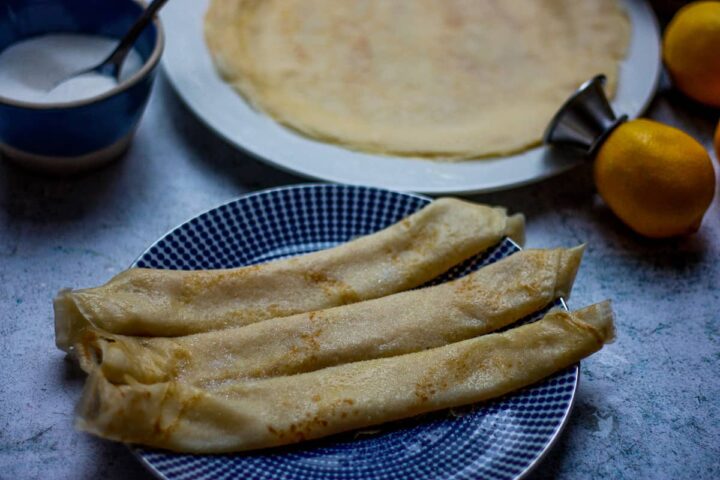
Our Sunday ritual
I make the batter and get everything else that I need ready. My kids stand either side of me at the stove. They're still a bit small to reach the benchtop without steps. The taller one grabs the step they stand on to wash their hands in the bathroom. The smaller one gets the mini red stepladder I use several times a day to get to stuff in high kitchen cupboards. They eat the crepes as I make them. They sometimes have fresh berries or bananas. We always sprinkle over generous amounts of fresh squeezed lemon juice and sugar. We roll up the pancakes and sprinkle a little more sugar over the crepe log. The kids fight over who has the first crepe - even if I remind them at the first pancakes is never the best one. Besides, the second pancake is only two minutes away.
Method adapted slightly from Delia Smith.
🥘 Ingredients
- plain flour
- salt
- eggs
- whole milk
- unsalted butter
- lemon
- granulated sugar
These pancakes come together with everyday ingredients. They can make a very impromptu breakfast when the kids wail 'Mum! Can we have pancakes?!'
🔪 Instructions
The batter (flour, salt, eggs, milk & melted butter) takes 5 minutes to make. All you need is a little patience to avoid getting lumps. And no, you don't have to toss them like they do on the telly (unless you want to of course).
Are crepes easy to make?
There's room in my heart and stomach for both 'French' crepes and (the other kind) 'American' pancakes. We don't play favourites in our house and alternate them week by week. The kids will refer to them as 'thin' (Crepes) or 'thick' (American) pancakes.In some ways, crepes are the easier of the two. There's no magic in trying to get them to rise (they don't need to). Crepes are so thin; there's no need to second-guess whether you've cooked them all the way though. Agreed, you can't cook them in batches, but they're so quick; about two minutes each
There is a bit of a learning curve to achieving very thin pancakes. Until you get there (which won't take long), they're still delicious. There will just be fewer, slightly thicker pancakes.
We make the basic batter with plain flour, eggs and milk.
First, we whisk together a pinch of salt in plain flour. We set our bowl on tea towel to keep it steady, make a well with the back of a spoon and break in two eggs.
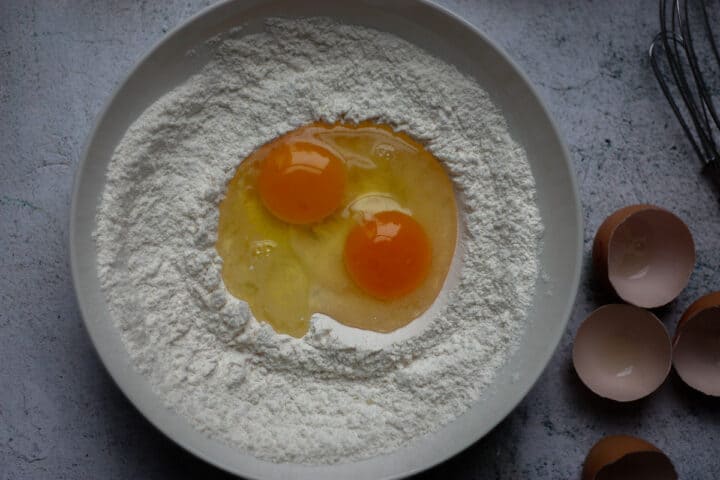
Taking our time, we whisk the eggs - together first, then into the flour - little by little. It's handy to start with a mini whisk or a fork.
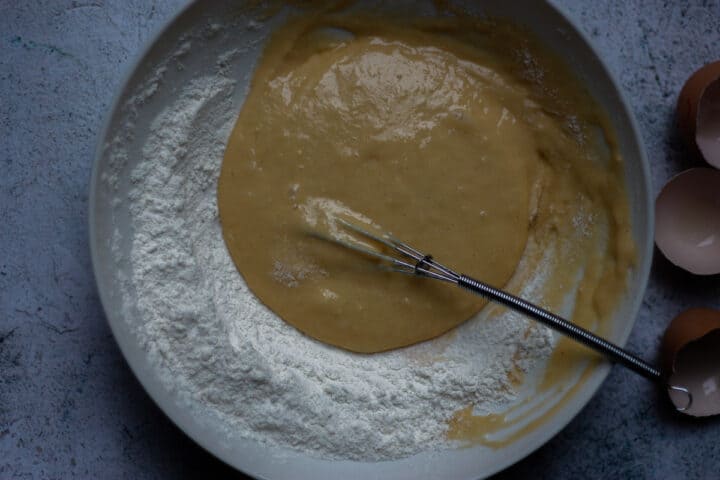
We start adding our liquid, a mix of milk and water, whisking between each addition. You can move onto using a bigger whisk as the batter loosens.
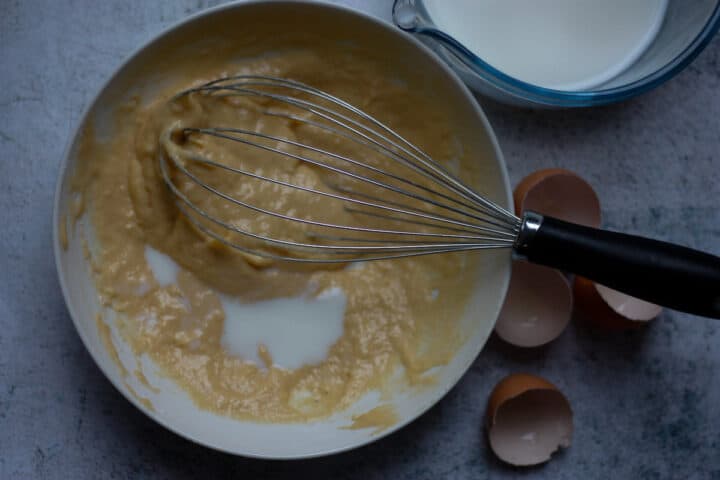
Once the batter is quite loose, we can add the rest of the liquid. The finished batter (before adding melted butter) - thin and lump-free
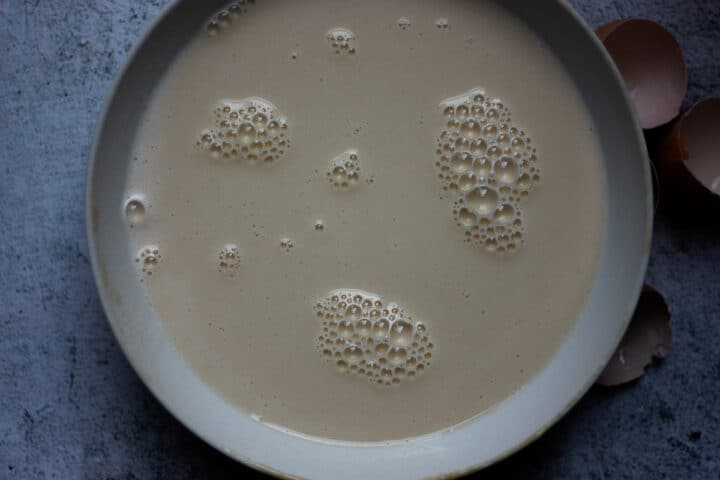
The magic happens when you add melted butter to the batter just before cooking the crepes. I forgot to add it once and the pancakes were bad! They were bland and austere. We all know that butter is amazing. I can think of three reasons:
- it adds richness and a better mouth-feel
- after the first pancake, you won't need to grease the pan between each pancake. There will be enough residual oil from the batter itself
- the pancakes brown better and get that lovely lacey pattern
A smear of butter preps the pan for the first pancake. Just the merest amount. We don't want to fry the pancakes. Any excess butter should be wiped away with a paper towel.
The pan is hot enough when a few droplets of water sizzle and hiss on impact. I run the tap, and flick some water from my fingertips onto the surface of the pan.
A few tablespoons of batter is poured in one spot at the edge of pan. Moving quickly, we coax the batter around the entire base before it starts to set. The pan goes back on the heat for a few minutes. The crepe needs to be flipped when it is browned on the underneath; the other side will only take a short time to cook.
Ready to flip- beads of 'sweat' on the surface of the crepe and curling at edges. You can take a peak underneath and check for a light brown lacey pattern.

The crepe only needs a few seconds to brown on the second side after flipping
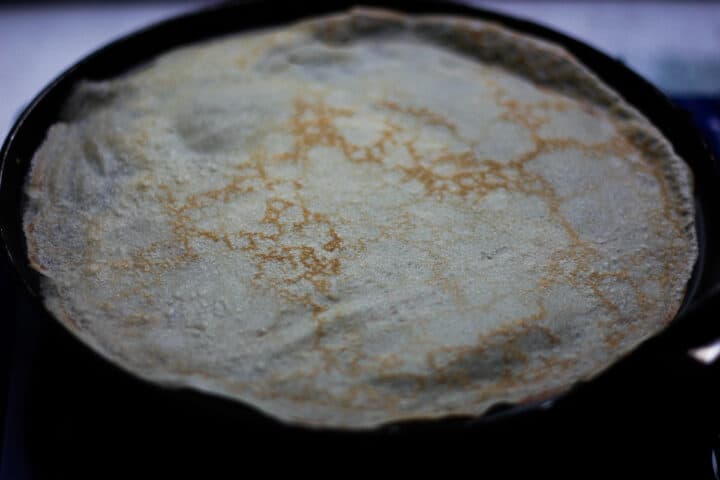
❓FAQs
A crepe pan is a small non-stick frying pan about 20-25cm (8-10 inches) in diameter. It has low sides to make getting under the crepe and flipping it easier. It also has a squared off bottom, rather than a curved part where the bottom merges with the sides. This makes it easier to get a clean crepe circle without too many raggedy edges. A crepe pan tends to be on the smaller size. We want to be able to pour in the batter and swirl it around to cover the entire base of the pan before it starts to set. Any small frying pan will work fine though. Crucially, it needs to be non-stick.
Only if you have time. It's not essential. Resting the batter allows the flour to fully absorb the liquid. Resting gives the gluten a chance to relax after all that whisking. I've used the batter straight away and the crepes still taste delicious. Resting will mean that you create more delicate, melt-in-your-mouth crepes. Allow to rest at room temperature for 30 minutes if you can, or in the fridge for up to two days. Straight away is fine if you're in a hurry
Trust me; lumps in crepe batter aren't encouraged or magically disappear on cooking. This is different to the approach we take when making American pancakes. With thick pancakes, we embrace batter lumps - a smooth batter will spread too much and not rise so well. Crepes don't need to rise. There's no working out lumps in crepe batter once they're there. You will have lumpy crepes. We avoid lumps by gradually incorporating eggs into flour. Then we add liquid little by little. Once there is no more dry flour, you can add the rest of the liquid in bigger amounts.
I have a 24cm/9 ½ in pan and reckon 60ml/4 Tablespoons (AKA an espresso cup's worth) is just right. It might take a bit of practice to swirl the batter all around the base of the pan in time before it sets. It's all in the wrist action (ahem). You can always patch up any little holes with drips of extra batter if you need. Thin pancakes are the goal here. You'll find that you can use less batter per pancake as you build up confidence and skill.
I set the pan on medium heat for a few minutes. We put the tiniest amount of butter and rub it around the pan with a paper towel so that the barest hint remans. When a flicks of water in the pan hisses and sizzles straight away, it's good to go. The batter should hiss a little when it hits the pan. The pan should not be so hot that it is smoking - the crepe will end up overcooking and getting too browned and crispy.
Flip too early; the crepe will look bland and pale and will probably tear. Flip too late and you'll get crispy edges. It will only take about a minute for the first side to cook, but there's no need to time it. There will be several clues. First the top of the pancake will 'sweat' slightly, then you'll see steam lift the bottom of the pancake up a touch. Last of all, the edges will pull away slightly from the pan and colour a little. It's as if the crepe is inviting you to lift it up (carefully!) with your fingers and peek underneath. You're looking for a lacey golden-brown pattern on the underside. If it hasn't coloured enough, leave for another 10 seconds or so. When coloured, slide in a offset spatula, and flip over. The crepes are very thin; you'll only need to cook the second side for about 20 seconds. Then you can shimmy the pancake out onto a plate.
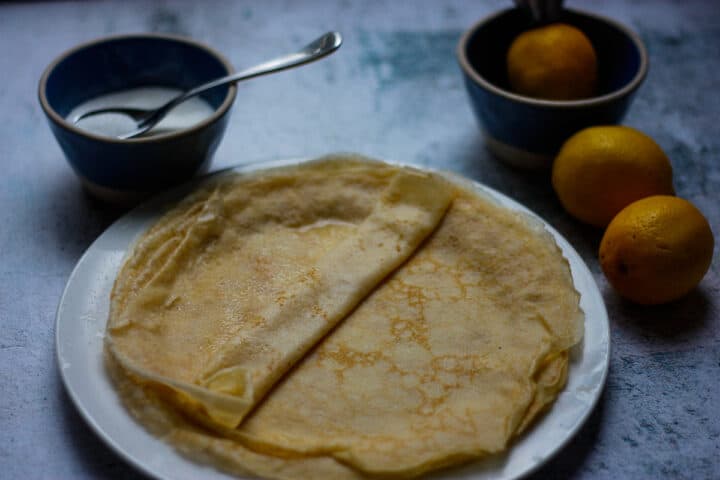
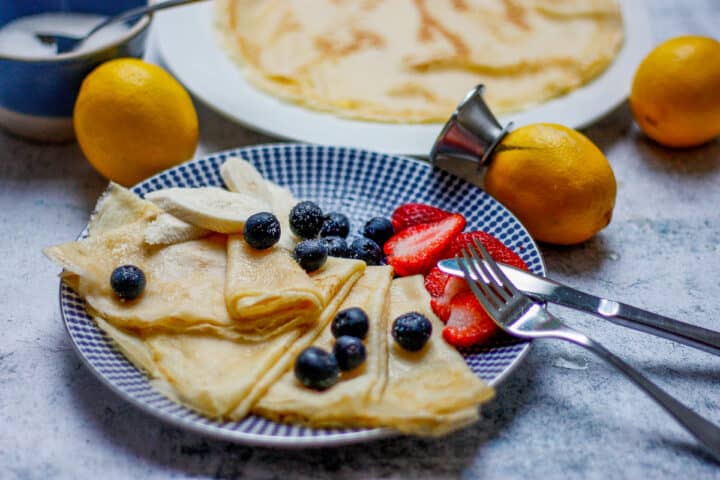
📖 Recipe
Equipment
- Crepe pan or other small frying pan, no more than 24cm/9 ½ inch diameter
- Offset spatula for flipping
Ingredients
- 110 g plain flour
- Pinch salt
- 2 eggs
- 200 ml whole milk
- 30 g unsalted butter
- lemon
- granulated sugar
Instructions
- Flour & Salt - in a large shallow bowl, weigh in the flour and whisk in the salt using a small hand whisk or fork. Using the back of a spoon, make a well in the centre. Set the bowl on top of a tea towel on the work bench to keep it steady.110 g plain flourPinch salt
- Liquid - break the eggs into a measuring jug. Add the milk and enough water to make up the volume to 400ml. Whisk together.2 eggs200 ml whole milk
- Batter - pour a little of the liquid into the flour well. Use a mini whisk or fork to whisk in the well, allowing some of the flour around the edge to fall in and get incorporated. Continue to add liquid and increase the size of your circles to combine more and more flour. Switch over to a larger hand whisk while you add in the rest of the liquid in bigger quantities. A flexible spatula is useful to make sure there's no thicker batter stuck to the bottom of the bowl. The batter should be thin and smooth. Transfer the batter to a jug for easy pouring; you can pass through a sieve if you want to make sure it is entirely smooth.
- Rest - leave to rest for 30 minutes (unrefrigerated).
- Butter - melt the butter (very briefly in the microwave) and allow to cool slightly.30 g unsalted butter
- Enrich Batter - pour the melted (and cooled) butter into the batter and stir though. Pour out 60ml (4 Tablespoons) of batter for your first pancake into an espresso coffee cup or equivalent.
- Preheat Pan - over medium heat for a few minutes. When a splash of water flicked into the pan sizzles on contact, you're ready to start cooking the pancakes
- Cook Crepe - lift the crepe pan up off the heat. With the other hand, add the batter portion in one spot at the edge. Quickly, quickly swirl and tilt the pan to spread the batter all over the bottom. Fill up any gaps with a few drips of batter from a teaspoon. Set the pan down over the heat again. Cook for about a minute, until the crepe is lifting away from the edges of the pan slightly and the top looks a bit 'sweaty'. Lift an edge up and look underneath. We want a browned lacey pattern. Flip and cook for about 20 seconds on the other side before shimmying out onto a plate (note).
- Top - sprinkle over some lemon juice and granulated sugar before rolling up (about a teaspoon of each). Roll up the crepe and sprinkle a little more sugar over top.lemongranulated sugar



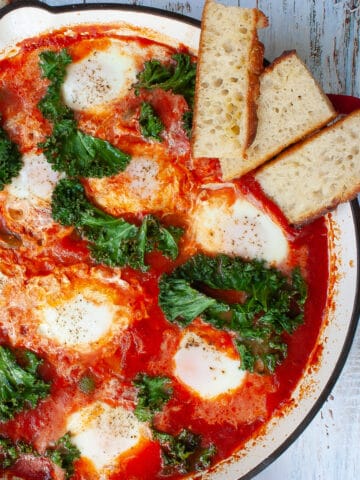






Comments